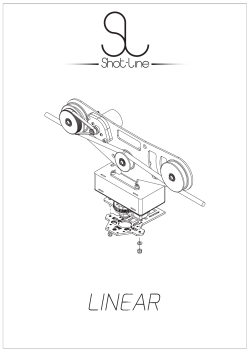
Slides - MIT Partnership for a Systems Approach to Safety (PSAS)
e n e r g y. s a n d i a . g o v System’s Safety in Grid Energy Storage: Challenges and Solutions through the Application of STAMP 03/25/2015 David Rosewater PE Energy Storage Test Engineer Sandia National Laboratories is a multi-program laboratory managed and operated by Sandia Corporation, a wholly owned subsidiary of Lockheed Martin Corporation, for the U.S. Department of Energy’s National Nuclear Security Administration under contract DE-AC04-94AL85000 SAND2015-2072 PE Codes, Standards, and Regulations (CSRs) National Electrical Code (NEC) was fist published in the 1897 Source: www.nfpa.org/ Intro to Safety in the Electric Grid When something isn’t in the code Equivalence No more hazardous nor less safe Independent Arbitration Offload liability onto a third party who will verify that systems are compliant with all applicable standards. Insurance Actuarial tables track failures and correlate them to payouts Technical decisions are approved by lawyers and economists 2 Grid Energy Storage Storage can provide significant value to the grid Example technologies: Batteries Flywheels, Ultra-capacitors Flow Batteries 3 Picture Source: Energy Storage 101 Short Course Slides Safety in Grid Energy Storage A. Fast Pace of Technological Change In many cases the technology is improving too quickly to properly adjust for the impact that changes have on safety. In the past decade the number of energy storage technologies has greatly expanded. These dynamics make safety difficult for standards bodies to properly control, as they are continuously acting on lagging information. B. Increasing Complexity and Coupling Even while the quantity of grid connected energy storage has been steadily increasing, its complexity has increased exponentially. This has made existing safety analyses tools much more difficult to apply and costs to companies to validate safety to increase. C. Decreasing Tolerance for Single Accidents Injuries generate lawsuits, fires raise insurance premiums, and reputation damage can result in significant lost business. The effects do not then stop with the company responsible. By association, the whole energy storage industry can be affected. 4 Source: Engineering a Safer World: Chapter 1: Why we need something different? Example of CAST Generic Flow Battery By Nick B, benboy00 [CC-BY-SA-3.0 (http://creativecommons.org/licenses/by-sa/3.0)], via Wikimedia Commons Accident: Loss of effective electrolyte containment - Several month delay for commissioning - Leak sensors were removed to fill tank - The vent had been blocked by nesting insects - Electrolyte heated during use causing tank pressure to rise - Tank was damaged by pressure rise and leaked - Secondary containment filled and started to overflow 5 CAST of a Flow Battery Electrolyte Spill Flow battery functional control diagram 6 CAST of a Flow Battery Electrolyte Spill 3 Proposed corrective actions from initial incident report 9 Additional recommendations from applying CAST Outcome of Root Cause Analysis Proposed Actions Develop Emergency Call List Protection circuit verification to be performed before operation Install Vent Tube Screen Actions for Sandia/DOE 1. Develop consistent and complete Codes Standards and Regulations (CSR) for ESS 2. Develop general commissioning Requirements for ESS 3. Develop energy storage System Safety Protocols for flow batteries Site Owner 4. Develop clear site use requirements Actions for Off-Site Operators 5. Ensure communication with on-site personnel is consistent throughout commissioning Energy Storage Vender 6. Update commissioning plan to include inspection and testing of all critical elements before operation 7. Design a feedback mechanism to detect tank overpressure 8. Conduct practice commissioning sessions for technicians 9. Design more effective secondary containment 7 Application of STPA - Transpower GridSaver Quick Stats. Prototype 1 MW Lithium-Ion Battery Built into a 40” shipping container Four 900 volt strings, Over 1000 individual battery cells, Liquid cooling loop for its power inverters. (a) External (b) Internal Transpower GridSaver Battery Energy Storage System 8 The complexity of battery systems Control loops Battery Parameters – Inverter – Air Conditioning Inverter Parameters – Coolant Grid Interaction Maintenance Incident Response 100’s of safety control actions 1000’s of causal factors Safety Control Structure for the Transpower GridSaver 9 Selected Results to Date Unexpected causal factors Not venting air form the enclosure Profile used from a difference battery string Causal factors help develop tests for leading indicators Test Leading Indicator Test for Measurement Accuracy Measurement accuracy or delay is out of compliance Operator Qualification Testing: Operator does not meet the predefined minimum standard for qualification 10 Broader Impacts of STAMP -Google Search for “Battery Safety” Sources: http://www.consumerreports.org/cro/news/2014/07/how-safe-are-lithium-ionbatteries/index.htm http://newscenter.lbl.gov/2015/02/09/new-battery-startup-promises-safe-lithiumbatteries/ http://www.nrel.gov/education/pdfs/lithium-ion_battery_safety_hazards.pdf http://cen.acs.org/articles/91/i6/Assessing-Safety-Lithium-Ion-Batteries.html 11 Broader Impacts of STAMP “Battery Safety” is a buzz word around which many conferences, research programs, and products are organized. Battery System Properties Battery Cell Properties • Capacity • Volatility • Temperature Range • Safety Kristoferb [CC-BY-SA-3.0 (http://creativecommons.org/licenses/bysa/3.0) or GFDL (http://www.gnu.org/copyleft/fdl.html)], via Wikimedia Commons “Safety” is not a property of a component • Capacity • Service Life • Control Algorithm • Safety By Jelson25 (Own work) [CC-BY-3.0 (http://creativecommons.org/licenses/by/3.0)], via Wikimedia Commons Safety is a system property A systems perspective on safety offers better language to communicate how batteries can be kept safe and why they sometimes are not kept safe (rather then are or are not safe) 12 Thank You to the DOE OE and especially Dr. Gyuk for his dedication and support to the ES industry and Sandia’s ES Program. I also want to acknowledge professor Nancy Leveson and her team at MIT for the development of STAMP, STPA, and CAST. More information can be found at: http://sunnyday.mit.edu/ 13 Questions? David Rosewater dmrose@sandia.gov 505 844-3722 14
© Copyright 2025










